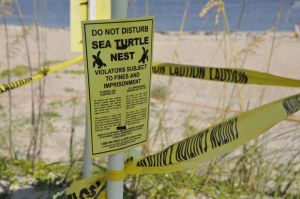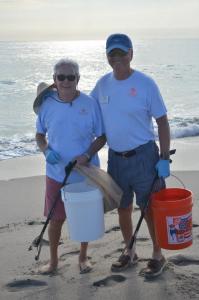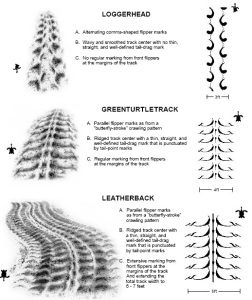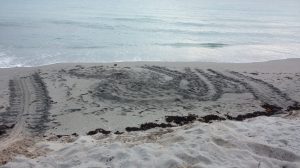Supporting sea turtles is a year round commitment, however eight of the twelve months of the year are especially crucial. Sea turtle nesting season spans from March 1 to October 31. Since we are halfway through the season, it is imperative to review the do’s and don’ts.
1. “You’ve got to go and DIG FILL those holes.”
Fill in holes and knock down sand castles to make the beach a safer nesting and hatching environment for sea turtles. Unfilled holes can entrap hatchlings as they make their trek into the sea. Avoiding digging holes in the first place increases sea turtles’ protection. Digging holes on the beach during nesting season can accidentally uncover a sea turtle nest. Although all nests are protected by law, only a small portion of nests are visibly marked.
2. “ABC F.W.C. It’s Easy as 1.2.3.”
Report any violations or inappropriate behavior that you witness to *FWC. It is also important to report any dead, sick, stranded, or injured sea turtles that you encounter on the beach. In Florida, you cal call FWC Wildlife Alert Number at 1-888-404-3922. In addition, you can report violations via text message or online. Disoriented or stranded hatchlings can be brought to LMC’s 24 hour drop-off cooler located outside the front doors of the center.
1. Don’t Shine Bright Like A Diamond

Avoid using flashlights, lanterns, or flash photography on the beaches at night. Lights disturb nesting turtles and hatchlings, causing them to become disoriented as they make their way into the ocean. Adult females will avoid lighted beaches for nesting, therefore it’s important to turn off outdoor lights and shield indoor lights to prevent lights shining on the beaches.
2. “No Touchy!”
It’s against the law to touch or disturb nesting sea turtles, hatchlings, or their nests. Human contact can be an unnecessary source of stress to the nesting females. In addition, unwanted bacterial exchange can occur between humans and turtles. Allowing hatchlings to crawl to the ocean on their own enables them to imprint on their own beach and return when they are ready to make nests. Avoiding touching sea turtles is for your safety as well, because sea turtles do bite.
3. Don’t make the beach a grouch paradise.
Oscar the Grouch may thrive in trash, but sea turtles do not. Beaches are not dumpsters, so take your trash with you when you leave. Throwing away foreign objects, trash, and debris creates a safer habitat for sea turtles to nest and hatch in. Researchers predict that approximately 1 in 1,000 to 1 in 10,000 eggs produce hatchlings that reach adulthood, therefore it is vital to increase a hatchlings survival by reducing litter.
PRO TIP:
Leatherback sea turtles nest in Florida from March through July. Loggerheads nest in Florida from April through September. Greens nest in Florida from May through September. Hawksbills occasionally nest in Palm Beach County each year. Kemp’s Ridleys nests are mainly restricted to a 20-mile stretch of beach in the western Gulf of Mexico. Learn how to identify the three most common types of sea turtle tracks on our beaches:
Written by LMC Marketing Intern, Amanda Moore.









